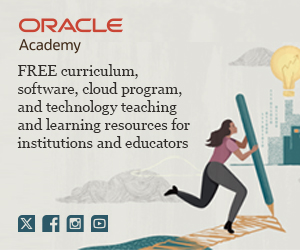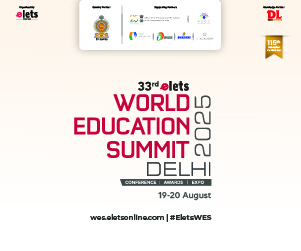Failure is not an option any more for students of class 10 of the Punjab School Education Board (PSEB)
Government on revision of pay scale of teachers in University
Government's attention has been drawn to a news item appearing in certain sections of the print media alleging delay on the part of the Union Ministry of Human Resource Development and the UGC in implementing the decision on revision of pay scale of teachers in Universities and Colleges. It is clarified for general information that the MHRD has already issued Government's decision vide communication No.1-32/2006-UII/UI(i) to UGC on 31.12.2008 revising pay with effect from 1.1.2006 and some of the service conditions of teachers and equivalent positions. Copies of the said communication were endorsed, among others, to Chief Secretaries of State Governments with clear advice in regard to what the State Governments are expected to do in order to be eligible for Central assistance. In view of this, no separate order is required to be issued to State Governments. Details of the scheme are also available on Ministry's website. The scheme contains a provision that the revised pay and applicable allowances as also arrears up to 40% of the total arrears could be paid to all eligible beneficiaries under the scheme, pending issuance of regulations by the UGC. The UGC has, in the meantime, approached MHRD for guidance for preparation of fitment tables for various categories of incumbents. The finalisation of fitment tables does not stand in the way of teachers getting revised pay based on an undertaking to be given by them which has also been stated in paras 10 and 11 of the Ministry's Orders. While the fitment tables are being finalised in consultation with the Ministry of Finance, many teachers are reported to have already received their salary under the revised scheme, based on ad hoc fixation of pay.
CBSE regional office opens in Bhubaneswar
Government's attention has been drawn to a news item appearing in certain sections of the print media alleging delay on the part of the Union Ministry of Human Resource Development and the UGC in implementing the decision on revision of pay scale of teachers in Universities and Colleges. Orissa CM Naveen Patnaik lays foundation stone of IIT-Bhubnaeswar.
The 8th Regional Office of the Central Board of Secondary Education (CBSE) was opened in Bhubaneswar on Thursday. The regional Board office will have 632 schools affiliated to it from Orissa, West Bengal and Chhattishgarh. In his message, Union Human Resource Development Minister Arjun Singh envisaged that two teachers' training centres would be opened by the CBSE. CBSE Chairman Vineet Joshi read out the message as Singh could not attend the inaugural function due to unavoidable circumstances. The welcome song was presented by the students of Chandrasekharpur DAV School, while the KV No-1 School students presented the National Anthem. Regional officers, principals, teachers and students from different CBSE-affiliated schools attended the function.
Government files against students
The United States is filing a slew of civil lawsuits this month in federal court in Chicago against people who received government student loans, as long ago as the 1980s, and have failed to repay the funds. The U.S. Department of Justice contracts with private law firms to bring the cases and has recently renewed a contract that could lead to the filing of as many as 20 new cases per week for the first few months of this year. The government notified the clerk of the U.S. District Court for the Northern District of Illinois at the beginning of the year that those cases may be flowing in for the next few months, said Randall Samborn, a spokesman for the U.S. Attorney's Office for the Northern District of Illinois.
'The government pursues recovery of money it's owed,' said Samborn. 'Unfortunately, student loan defaults are a voluminous source of litigation.' The collections firm in Chicago that's handling the cases is Teller, Levit & Silvertrust, which has eight attorneys. The lawsuits have been filed by attorney Margaret Keen, who the firm's Web site says specializes in student loan and post-judgment collection. She referred questions to Harold Stotland, another lawyer at the firm who said he was unaware of an increase, though he acknowledged that his firm entered a new contract with the government for the program in the past six months to a year.
Free online lectures by Academic Earth
Academic Earth is in talks with universities about promoting web-based lectures, while some campuses hesitate. A for-profit web site bases its business model on mining the Internet for and then posting publicly available lectures from prestigious universities. The officials from at least one campus are reviewing the arrangement and reserving judgment. Academic Earth, which launched in January, has more than 1,600 web-based video lectures from campuses nationwide, including Yale, Stanford, and MIT. Richard Ludlow, CEO of Academic Earth, said the site only uses videos posted under the Creative Commons license, which allows for-profit business to use the lectures, but not for commercial reasons.
Ludlow, who visited with MIT officials last week, said the videos would not be monetized unless university officials agreed to incorporate advertisements with the lectures. In those cases, revenues would be shared with the school. He said Academic Earth would seek further face-to-face meetings with more universities in the coming weeks. Establishing a for-profit web site, Ludlow said, would be the only way to spread the collective wealth of university lectures and other videos to students worldwide. 'We want to have a sustainable model, so we are for-profit,' said Ludlow, 23, a 2007 Yale graduate, adding that the site had 100,000 visitors in its first 16 days. 'We wanted something that could not just produce something once and run out, but be an engine for growth and continue.' Academic Earth will monetize videos from other sources outside universities that post their content, said Ludlow.
No traditional grading system for starters
School districts across the United States are trying to improve student performance. But few have taken as radical an approach as Adams 50 in Colorado. For starters, when the elementary and middle school students come back next fall, there won't be any grade levels or traditional grades, for that matter. And the organizational transformation to a pattern popular in the era of the little red schoolhouse, but with a modern twist is only the most visible change in a district facing significant challenges. Adams 50 is striving to reverse dismal test scores and a soaring dropout rate by opting for a wholesale reinvention of itself, departing from the incremental reforms usually favored by administrators.
The 10,000-student district in the metropolitan Denver area is at the forefront of a new standards-based educational approach that has achieved success in individual schools and in some small districts in Alaska, but has yet to be put to the test on such a large scale in an urban district. 'There was a sense of urgency to attend to what wasn't happening for kids here,' says Roberta Selleck, district superintendent, explaining why she decided to go with a drastic approach. 'When [we saw] the stats for the whole school district over time, we realized we are disconnecting [from] our kids.' The change that's getting the most attention by far is the decision to do away with traditional grade levels. At first, the new approach will affect only kids traditionally in grades lower than eighth. The district plans to phase the reform in through high school, one year at a time. Ultimately, there will be 10 multiage levels, rather than 12 grades, and students might be in different levels depending on the subject. They'll move up only as they demonstrate mastery of the material. Selleck and her colleagues are quick to emphasize this is only one piece of a radically different, more student-centered, approach to learning–and it's not the same as tracking, the currently out-of-favor system of grouping students by ability.
Regularization of ICT contract teachers
Education Minister Mir Hazaar Khan Bijarani on Friday said all contract teachers working in Islamabad Capital Territory (ICT) would be regularised according to the new education policy, expected to be announced on March 23. During certificate and award distributing ceremony at Islamabad Model College for Girls (IMCG), F-6/2, the minister told reporters a permanent director-general would be appointed at Federal Directorate of Education (FDE) to make its working better. He said female students should take extra interest in education as they would have to play an vital role in nation building.
He said the government was committed to increasing literacy rate one hundred percent in Pakistan by 2010. He said the IMCG, F-6/2 would soon be equipped with an IT lab.
Functional Literacy in 40 Hours! : Kesav Vithal Nori, Business Systems and Cybernetics Centre, TCS
| Prof Kesav Vithal Nori, Executive Director, Business Systems and Cybernetics Centre, TCS presents his views here on the challenges and impact of the Computer Based Functional Literacy project… |
Nearly 350 million Indians are illiterate. How does the Computer Based Functional Literacy initiative by Tata Consultancy Services (TCS) seek to address this challenge?
Adult illiterates make up 15% to 20% of the population. The National Literacy Mission was set up by the Government to redress this situation. Government agencies have the resources to reach all adult illiterates, but the productivity of their teachers is low. The teachers are poorly paid and drop out rates are high among students. At this rate of progress, it could take anything between 15-20 years for the government to eradicate illiteracy. We need a large army of teachers to address this challenge. This was the reason for TCS to embark on developing CBFL software.
Experiments on the ground with CBFL showed that our slogan ’40 hours to literacy’ was reasonable. This was borne out through experiments in eight Indian languages. Teachers found that they could handle large numbers of students and more batches of learners. Even senior school children could become instructors as the teaching expertise was embedded in the software. The software itself demanded no computer literacy, except some ability to use the ‘mouse’. We had great hopes!
The CBFL prides itself with the potential of making 90% of India functionally literate in three to five years? How has the journey been so far and are you on course towards this historic goal?
We made big plans. However, things seldom go according to plan! The motivation levels in the field are poor, as are the rewards. Our core competence is in developing software, not in running such a programme. Apart from irregular students and discontented teachers, we had to deal with government officers who would get transferred periodically. Wherever we had some constancy, the results were more than heartening.
We were hardly qualified to sift between NGOs who wanted to help. Everyone promised us used computers, but only a scant few helped out. The logistics in getting computers, refurbishing, and transporting them to remote places was another underestimated problem. Getting necessary government clearance for discarded computers, imported by the software industry into export promotion zones for business purposes, was another logistic nightmare. TCS donated a large number of computers, but that cannot fill the needs of a national programme.
Our performance has been abysmal in eradicating illiteracy. Around 200,000 adult illiterates have benefited through the CBFL. That’s neither here nor there with respect to the size of the problem.
What makes the CBFL programme effective?
Technology is only a means to address important ends. As technical people, we can envision and fashion technologies that address important social needs.
This was our principal motivation. Technology is effective when its internal complexity does not get in the way of its absorption. A case in point is the telephone. Its usage is simple and intuitive. CBFL had this characteristic. The simplicity of CBFL helped in making it readily and easily usable by untrained people.
The computer was a big attraction in rural areas.
Technology is not worth it if it is not a productivity multiplier, and democratic with respect to minimum quality for all. What is both humbling and chastening however is that even good technology is not good enough. We need to have a collective will to address immense social problems.
What kind of partnerships or engagement has the programme managed to forge with different stakeholders?
The National Knowledge Commission reviewed CBFL and advised NLM to adopt as many technologies and techniques available to spread literacy. TCS has joined hands with NASSCOM, CII, and MSSRF to spread the use of this technology. The technology is being used in jails in several cities to provide inmates with literacy instruction. TCS volunteers also do their bit in spreading its reach. For Urdu, we have a partnership with Siasat Daily in a programme that is flourishing. Tata Steel has been a big experimenter, having done without computers in Jharkhand, and helping create CBFL for Oriya. IIIT Hyderabad and IIT Bombay are interested in using this as a base for technologies for supporting education. Discussions are also on with State governments of Andhra Pradesh, Tamil Nadu, Maharashtra, Gujarat, Rajasthan, and Karnataka for spreading literacy.
Please share with us details of its international outreach.
On a visit to India, the then First Lady of South Africa, Madame Zanele Mbeki, visited one of our field sites. She was keen to see if CBFL could be used to address the needs of tribal languages in South Africa and invited TCS to visit them. Their problem was complex for they had no scripts for their tribal languages. A TCS team visited South Africa to standardise their coding in Roman alphabet. This provided a basis for them to effectively implement their own CBFL. We are also working towards completing the development of CBFL for Arabic and will be given to UNESCO Egypt and Moroccan government, as a start.
How has the government and its concerned bureaucracy responded to the programme?
On the whole it would be fair to say that our government is not dogmatic about any approach to address adult illiteracy. However, they have not been proactive in extending ICT to address such societal causes. The State Resource Centre in Andhra Pradesh has developed new primers and supporting computer software; but these are at variance with the principles and methodology provided by the older versions. We would be happy to transfer our technologies to NLM as it is based on their collateral and principles and will be easiest for them to absorb.
Would you like to share with our readers the impact of this programme, giving specific instances?
Literacy is more like a fundamental civil right. It empowers us to participate in the mainstream of society, giving us an uplifting independence. We found many heart warming instances of this point of view, mostly from women. One young lady found greater acceptance at home as she was able to participate in her children’s studies. Another found joy in her new found independence of not having to seek directions for her destination.
| On the whole it would be fair to say that our government is not dogmatic about any approach to address adult illiteracy. However, they have not been proactive in extending ICT to address such societal causes |
A bunch of school children on the outskirts of Bhopal were very excited about CBFL. The Madhya Pradesh government had put adult illiterates under each senior school student and gave these kids ‘guru dakshina’ for successfully turning these adults literate. These children felt CBFL could help create greater interest in their elderly charges! These experiences reassured us that not combining literacy instruction with livelihood earning skills was inessential.
| Prof Nori is one of the pioneers of the Tata Con Growing Up With An Unique Model Education, Research, And Industry Interaction : S Sadagopan, International Institute of Information Technology (IIIT) Bangalore
Please tell us about the vision behind setting up of IIIT Bangalore. How far has the institute succeeded in achieving this vision?” Within a span of nine years, the institute has established a name for itself. This is demonstrated by the fact that IIIT-B has been conferred the status of a Deemed University by the University Grants Commission. It has been recognised as a Scientific and Industrial Research Organisation (SIRO) by the Government of India and is also the Principal Agency executing the INR 3 crore project on Telematics Demonstration as part of CAR (Core Committee on Automotive Research). The institute bagged Karnataka’s Best IT Export Award 2007 for its innovative employment programme for uplift of socio-economic weaker sections. What are the challenges confronting India’s higher education system today? How can Information and Communication Technologies help overcome these challenges? The role of ICT becomes important in such a scenario. Successful integration of ICTs leads to improved delivery, processes and quality control so that teachers can become more effective. What initiatives have been taken by your institute for integrating ICT in its framework? All the classrooms are ‘smart’, with high-speed data networks and large projection systems for audio and video. Video conferencing capabilities are built in using state-of-the-art audio-visual equipment. They include electronic smart boards, location-sensing microphones, and multiple LCD projectors, thus enabling an enriching learning experience. All students have a Wi-Fi enabled laptop for their exclusive use and we also have a Digital Library.
Do you think a Public-Private Partnership (PPP) model will help in effective integration of technology in higher education? Thanks to the uniqueness of IIIT-B vis-a-vis its location at the Electronics City, involvement of Indian IT industry and the PPP model of IIIT-B, the Institute has a large set of linkages with industry in general and the IT industry in particular. The linkages come in the form of Chair Professorships like the ones by Daimler Chrysler in Automotive IT, ICICI, HP, and Canara Bank. Labs have also been funded by Industry over the years at the institute, for example, Siemens Vision Lab, Honeywell Automation Lab, Intel Planet and Community PC Lab, and HP IMS Lab. Texas Instruments has named IIIT-B as one of the elite institutes enlisted in their University Program. Companies like GE, HP, Huawei Technologies, Bank of India, Infosys, Siemens, Intel, Motorola, etc, have also endowed scholarships to support students. What do you think of the current employability quotient among graduates? In what ways can it be enhanced? Our institute has tied up with Radix Learning, for a professional certification programme ‘Yogyata’ aiming to enhance employability for the IT sector. Yogyata is offered as a blended-learning programme including classroom lectures, web-based, multimedia-enabled, self-learning courseware, Actionable Learning modules, synchronous and asynchronous online mentoring and collaborative learning. The curriculum is based on inputs from leading IT companies. Do you think India’s higher education system can be compared to the best in the world, especially the UK and US? If not, what are the reasons responsible for it?
Future Group to open up universities and schoolsFuture Group, an education-based group of the country, yesterday organised a press conference at the group office of Dhanmondi in the city to explain the aims, objectives and programmes of different companies of the group. It was also told, the Group will establish a university in Dhaka and an education-based TV Channel. It also will establish more than five hundred schools and colleges at least one in per upazila and will provide international standard of teaching. Honorary Chairman of the group Prof AMM Hamidur Rahman spoke to journalists at the press conference, while Managing Director of the Group Yeasir Ahmed, Chairman of Future Group Publication SM Jakir Hossain, Vice Chairman of the Publication Abdus Salim, Deputy Managing Director of the Group Rafiqul Islam, Supriya Kumar Chakrabarti, Wahiduzzaman, Sohel Ahmed, among others attended. Hamidur Rahman said that Future Group desires to be a partner in the future progress of Bangladesh. It is the only education-based group of companies in the country. It would like to contribute not only in the world of education and technology, but also in such fields as health entertainment and social work, he added. The press conference was told that it is the only education-based group of companies in Asia. Companies so far formed are Future Education Ltd, Future Publication Ltd, Future Olympiad Ltd, Future Training Institute Ltd, Future Institute of Language Studies and Research Ltd, Future ICT and Call Center Ltd, Future E-Tech Ltd. |



















